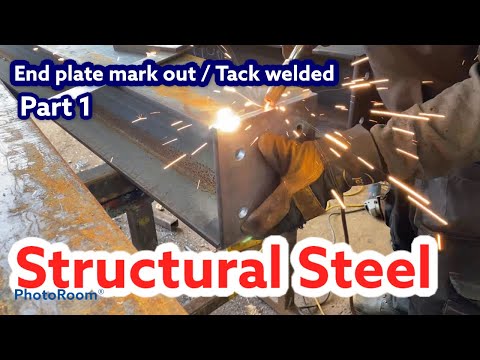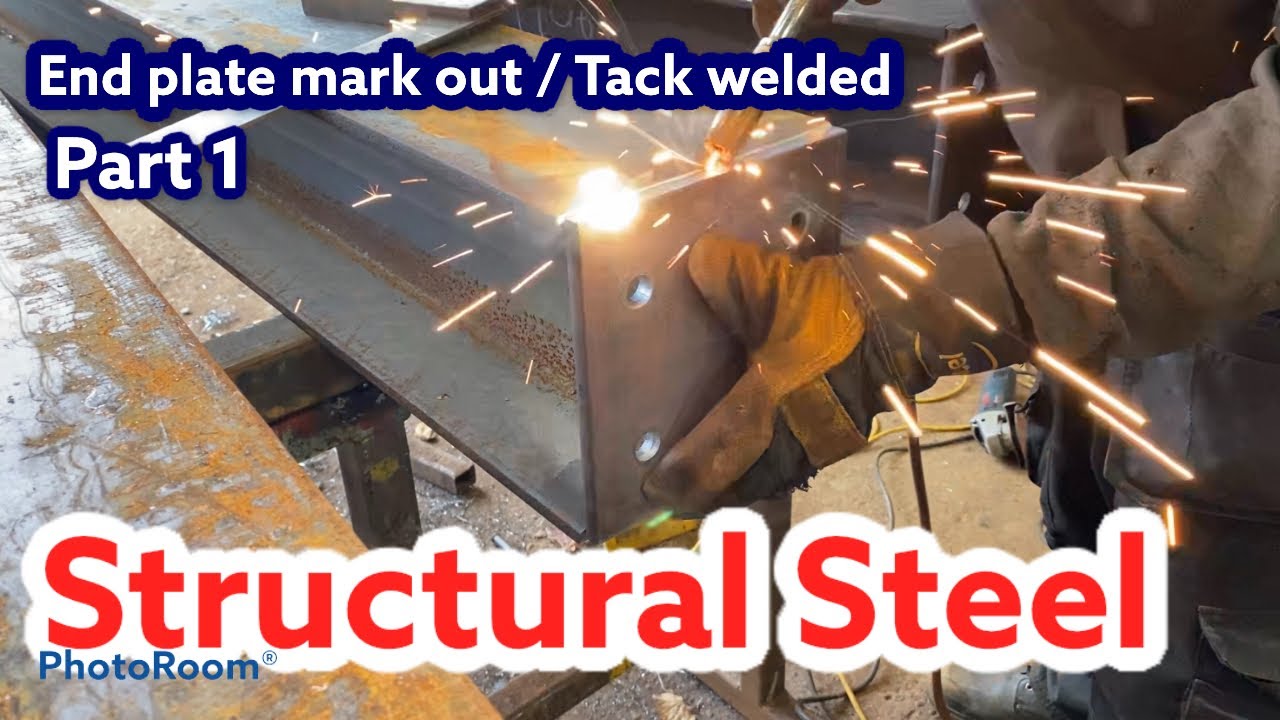Structural steel fabrication is a fascinating process that transforms raw steel into complex and durable structures. With precision and expertise, skilled fabricators meticulously cut, shape, and assemble steel components to create buildings, bridges, and other architectural wonders. This highly versatile construction technique offers immense strength and durability, making it the preferred choice for engineers and architects worldwide. Structural steel fabrication not only ensures the structural integrity of a project but also allows for limitless design possibilities. From skyscrapers to warehouses, structural steel fabrication enables the creation of awe-inspiring structures that stand the test of time. Utilizing advanced technology and state-of-the-art equipment, fabricators meticulously craft each steel element, ensuring it meets stringent quality standards. The precision and attention to detail involved in the fabrication process guarantee that every piece fits seamlessly together, resulting in a robust and reliable structure. Moreover, structural steel fabrication offers numerous advantages such as cost-effectiveness, sustainability, and ease of maintenance. Whether it’s a small-scale construction or a large-scale infrastructure project, structural steel fabrication is the backbone that brings architectural visions to life. Experience the artistry and strength of this remarkable process, and witness the transformation of simple steel into awe-inspiring structures that defy gravity and inspire awe.

The Importance of Structural Steel Fabrication in Construction
Structural steel fabrication plays a crucial role in the construction industry, providing the backbone for many buildings, bridges, and other infrastructure projects. It involves the process of bending, cutting, and shaping steel to create various structural components that are used to support and strengthen these structures. This article will explore the importance of structural steel fabrication and its various applications in construction.
The Advantages of Structural Steel
Structural steel is widely preferred in construction due to its numerous advantages. Firstly, it is an incredibly strong and durable material, which makes it ideal for supporting heavy loads and resisting external forces such as wind and earthquakes. Additionally, steel is highly versatile and can be easily fabricated into different shapes and sizes, allowing for a wide range of design possibilities. Its excellent ductility also means that it can be easily modified or repaired if necessary.
Structural steel fabrication involves the process of transforming raw steel into usable components. This process typically includes cutting, drilling, welding, and shaping the steel to meet the specific requirements of the project. Skilled fabricators use advanced techniques and machinery to ensure precision and quality in the fabrication process.
The Applications of Structural Steel Fabrication
Structural steel fabrication finds applications in various construction projects. One of the most common uses is in the construction of buildings. Steel beams and columns are often used as the primary structural elements, providing support and stability to the overall structure. The flexibility of steel allows architects and engineers to create unique and innovative designs that would be difficult to achieve with other materials.
Another important application of structural steel fabrication is in the construction of bridges. Steel is an ideal material for bridge construction due to its high strength-to-weight ratio. It allows for the creation of long and durable spans, reducing the need for additional supports. Steel bridges are also more resistant to corrosion, making them a cost-effective option in the long run.
Structural steel fabrication is also commonly used in the construction of industrial facilities such as warehouses, factories, and power plants. These structures often require large open spaces and heavy load-bearing capacities, which can be efficiently achieved with steel components. The durability and flexibility of steel make it a reliable choice for such demanding applications.
The Benefits of Structural Steel Fabrication
Structural steel fabrication offers numerous benefits to construction projects. Firstly, it allows for faster construction times compared to traditional building methods. The pre-fabricated steel components can be manufactured off-site and then easily assembled on-site, reducing construction time and costs. This also minimizes disruption to the surrounding environment and nearby communities.
Additionally, steel is a sustainable and environmentally-friendly material. It is 100% recyclable, which means that it can be reused without any loss of quality. Recycling steel also saves energy and reduces greenhouse gas emissions, making it a more sustainable choice compared to other construction materials.
Moreover, structural steel fabrication offers cost savings in the long term. Steel structures require minimal maintenance and have a long lifespan, reducing the need for frequent repairs or replacements. The strength and durability of steel also provide excellent resistance against fire, termites, and other common hazards, further reducing potential damage and associated costs.
The Future of Structural Steel Fabrication
Structural steel fabrication continues to evolve and improve with advancements in technology and engineering. The use of computer-aided design (CAD) and building information modeling (BIM) allows for greater accuracy and efficiency in the fabrication process. These technologies enable fabricators to visualize and optimize the design before production, reducing errors and improving overall quality.
Furthermore, the integration of automation and robotics in the fabrication process is revolutionizing the industry. Automated machinery and robots are capable of performing repetitive tasks with precision and speed, increasing productivity and reducing labor costs. This not only improves efficiency but also ensures a safer working environment for fabricators.
In conclusion, structural steel fabrication is an essential part of the construction industry, providing strength, durability, and versatility to various structures. Its numerous advantages, including speed of construction, sustainability, and cost savings, make it a preferred choice for architects, engineers, and contractors. As technology continues to advance, the future of structural steel fabrication looks promising, offering even greater efficiency and quality in construction projects.
“Crafting Precision: Mastering Structural Steel Fabrication – Marking and Securing End Cap Plates to Steel Beams”
Video Source : The Metal Fab Guy.
Structural Steel Fabrication
Structural Steel Fabrication
| Aspect | Description |
|---|---|
| Material | Structural steel is an alloy composed primarily of iron and carbon, with trace amounts of other elements such as manganese, phosphorus, sulfur, and silicon. It exhibits high strength, durability, and versatility, making it an ideal choice for construction projects. |
| Fabrication Techniques | Structural steel fabrication involves various techniques, including cutting, welding, bending, and assembling. Advanced technologies such as CNC (Computer Numerical Control) machines and laser cutting have revolutionized the precision and efficiency of the fabrication process. |
| Design Considerations | During the design phase, structural engineers take into account factors such as load-bearing capacity, environmental conditions, building codes, and architectural requirements. The goal is to create steel structures that offer optimal strength, stability, and safety. |
| Quality Assurance | To ensure the highest quality of fabricated steel, rigorous quality control measures are implemented. This includes material inspection, dimensional accuracy checks, weld testing, and adherence to industry standards and specifications. Quality assurance programs are essential to guarantee the structural integrity and performance of fabricated steel components. |
| Applications | Structural steel fabrication finds extensive use in a wide range of applications, including commercial buildings, industrial facilities, bridges, stadiums, and infrastructure projects. Its versatility allows for the creation of complex and innovative architectural designs, while its strength and durability ensure longevity and reliability. |
As an expert in structural steel fabrication, it is crucial to understand the intricacies of this field. The table above provides an overview of the key aspects involved in the fabrication process. From the composition of the material to the various fabrication techniques employed, every step is vital in creating robust and reliable steel structures.
The choice of structural steel as a building material stems from its exceptional properties. Its combination of strength, durability, and versatility makes it an indispensable component in modern construction projects. By harnessing the power of cutting-edge technology, such as CNC machines and laser cutting, fabricators can achieve unparalleled precision and efficiency in their work.
Design considerations play a pivotal role in ensuring the success of structural steel projects. Engineers meticulously analyze load-bearing capacities, environmental factors, and architectural requirements to create structures that maximize strength, stability, and safety. Rigorous quality assurance programs, including material inspections and adherence to industry standards, ensure that fabricated steel components meet the highest quality benchmarks.
The applications of structural steel fabrication are vast and diverse. From towering commercial buildings to massive industrial facilities, steel structures provide the backbone for modern infrastructure. Bridges, stadiums, and other iconic architectural projects rely on the strength and longevity of structural steel. This material’s adaptability enables architects and engineers to explore innovative designs and push the boundaries of construction possibilities.
As an expert in this field, it is crucial to stay up-to-date with the latest advancements in structural steel fabrication. By continuously honing our skills and knowledge, we can contribute to the creation of remarkable and sustainable structures that shape the world around us.

